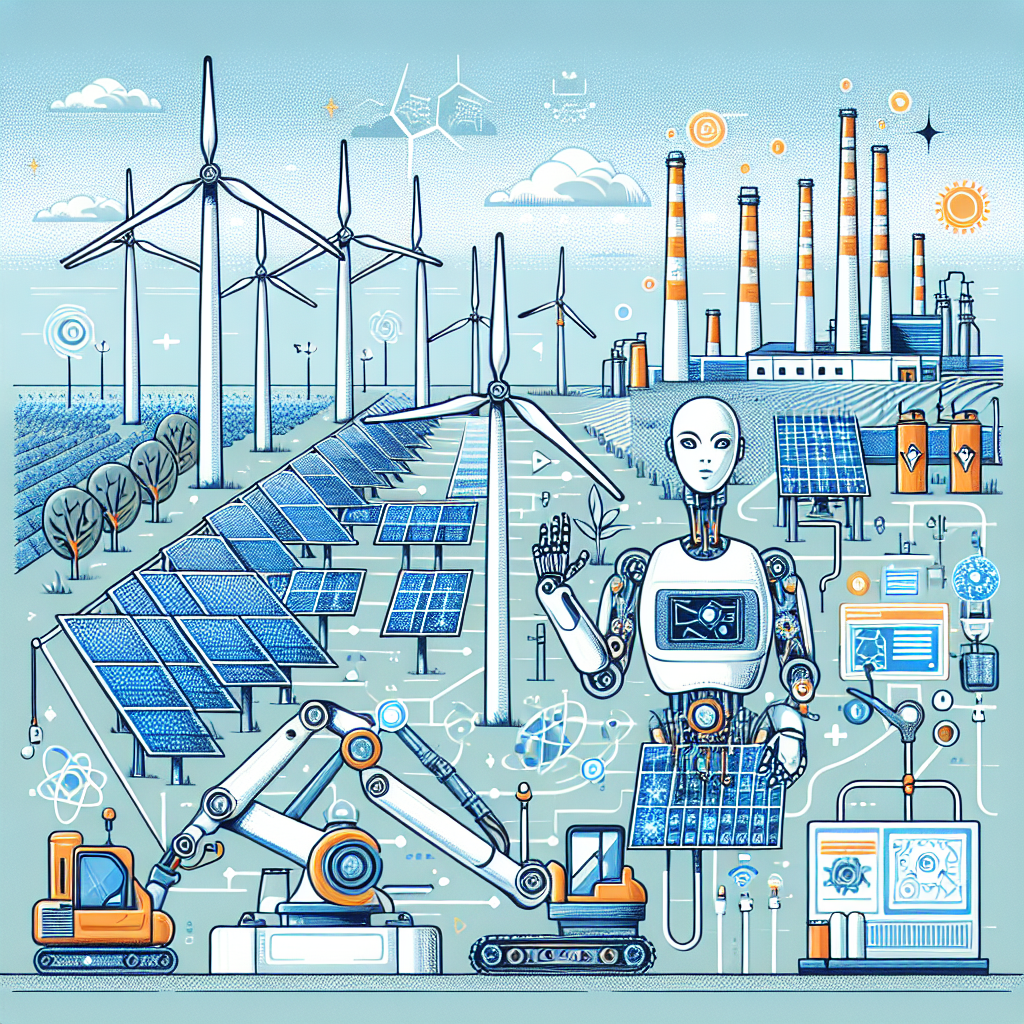AI-Powered Predictive Maintenance in Energy
Introduction
In recent years, there has been a significant increase in the use of artificial intelligence (AI) in various industries, including the energy sector. One of the key applications of AI in the energy industry is predictive maintenance. Predictive maintenance involves using data and AI algorithms to predict when equipment is likely to fail so that maintenance can be performed before a breakdown occurs. This approach can help energy companies reduce downtime, increase equipment lifespan, and improve overall operational efficiency.
AI-Powered Predictive Maintenance in Energy
AI-powered predictive maintenance in the energy sector involves the use of machine learning algorithms to analyze data collected from sensors, equipment, and other sources to predict when maintenance is needed. These algorithms can detect patterns and anomalies in the data that indicate potential equipment failures, allowing maintenance teams to take proactive action before a breakdown occurs.
There are several benefits to using AI-powered predictive maintenance in the energy sector. One of the key advantages is the ability to reduce downtime and avoid costly repairs. By predicting when equipment is likely to fail, maintenance can be scheduled at a convenient time, minimizing disruptions to operations. This can help energy companies save money and improve overall efficiency.
Another benefit of AI-powered predictive maintenance is the ability to extend the lifespan of equipment. By detecting potential issues early and addressing them before they escalate, energy companies can prolong the life of their assets and reduce the need for costly replacements. This can result in significant cost savings over time.
AI-powered predictive maintenance also allows energy companies to optimize their maintenance schedules. By analyzing data and predicting when maintenance is needed, companies can prioritize maintenance tasks based on urgency and importance. This can help maximize the efficiency of maintenance teams and ensure that resources are used effectively.
FAQs
Q: How does AI-powered predictive maintenance work?
A: AI-powered predictive maintenance works by analyzing data collected from sensors, equipment, and other sources to detect patterns and anomalies that indicate potential equipment failures. Machine learning algorithms are used to predict when maintenance is needed based on this data, allowing maintenance teams to take proactive action before a breakdown occurs.
Q: What types of equipment can benefit from AI-powered predictive maintenance?
A: AI-powered predictive maintenance can be used for a wide range of equipment in the energy sector, including turbines, compressors, pumps, generators, and more. Any equipment that generates data that can be analyzed for patterns and anomalies can benefit from predictive maintenance.
Q: How accurate is AI-powered predictive maintenance?
A: The accuracy of AI-powered predictive maintenance depends on the quality of the data being analyzed and the algorithms being used. In general, AI-powered predictive maintenance can be highly accurate, with some studies showing prediction accuracies of over 90%. However, it is important to continually refine and improve the algorithms to ensure the best possible results.
Q: What are the challenges of implementing AI-powered predictive maintenance?
A: One of the main challenges of implementing AI-powered predictive maintenance is the need for high-quality data. Inaccurate or incomplete data can lead to inaccurate predictions, so it is important to ensure that data collection processes are robust and reliable. Additionally, integrating AI algorithms into existing systems and workflows can be a complex and time-consuming process.
Q: What are some real-world examples of AI-powered predictive maintenance in the energy sector?
A: One example of AI-powered predictive maintenance in the energy sector is the use of machine learning algorithms to predict when wind turbines are likely to fail. By analyzing data collected from sensors on the turbines, algorithms can detect patterns that indicate potential issues and alert maintenance teams to take action. This can help prevent costly breakdowns and maximize the efficiency of wind farms.
Conclusion
AI-powered predictive maintenance is a powerful tool that can help energy companies improve operational efficiency, reduce downtime, and extend the lifespan of their equipment. By using machine learning algorithms to analyze data and predict when maintenance is needed, companies can take proactive action to prevent breakdowns and optimize their maintenance schedules. As the energy industry continues to embrace digital technologies, AI-powered predictive maintenance is likely to play an increasingly important role in ensuring the reliability and performance of energy infrastructure.

